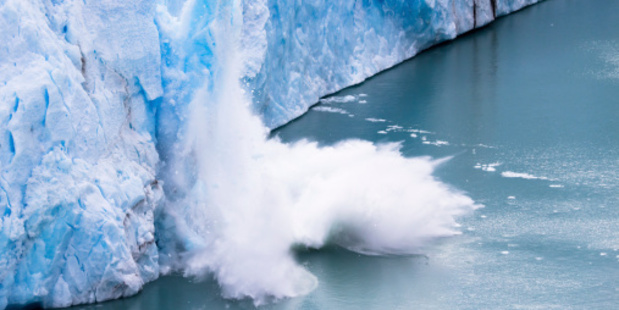
Parts of the vast ice sheet of East Antarctica - which collectively holds enough water to raise global sea levels by 53m - could begin an irreversible slide into the sea this century, causing an unstoppable process of global coastal destruction, scientists have warned.
East Antarctica is widely considered to be more stable than the West Antarctic ice sheet but a study suggests that a large region of the eastern ice sheet is in danger of becoming irreversibly unstable once a relatively thin section of retaining ice on its coast is lost, the researchers said.
A slab of coastal ice is all that is stopping the giant Wilkes Basin ice sheet from slipping into the sea. Once this process begins it will relentlessly continue to pour vast amounts of water into the oceans for centuries to come, raising global sea levels by between 3-4m, they said.
Read more:
• Cities that could be the next Atlantis
• UN: Extreme weather events du! e to climate change
• UN scientist: Look on bright side of climate change
"East Antarctica's Wilkes Basin is like a bottle on a slant and once uncorked it empties out," said Matthias Mengel of the Potsdam Institute for Climate Research in Germany, and lead author of the study published in the journal Nature Climate Change.
"The East Antarctic ice sheet has long been considered to be stable even under a warmer climate, in contrast to its West Antarctic counterpart. We have now shown that this may not be true," Mengel said.

Photo / Thinkstock
"This implies that the future sea-level contribution of the East Antarctic ice sheet may be significantly higher than previously estimated. This is important for the millions of people who live on the coasts. Every centimetre of sea level rise on top of what is already expected is going to be even more ! difficult to adapt to," he said. "By emitting more and more gr! eenhouse gases we might trigger responses now that we may not be able to stop in the future."
East Antarctica holds around a 10-times-greater volume of ice than West Antarctica. Much of the ice in the east lies at high altitude and is kept well below freezing point, but a large proportion of it - enough to raise sea levels by 19m - lies on bedrock that is below sea level, such as the Wilkes Basin.
Scientists had considered even this low-lying part of the East Antarctic ice sheet - the so-called marine ice sheet - to be more stable and less likely to disintegrate in a warmer climate than the marine ice sheet of the West Antarctic. However, analysis of the bedrock on which the marine ice sheet of Wilkes Basin stands suggests this is not the case. Scientists found that the rock becomes a raised ridge at the coast which allows the ice to form a protective plug between the ocean and the ice sheet.
Computer modelling shows that if the local ocean temperatures! around the East Antarctic rise, the ice plug will continue to melt to a point where the "bottle" of ice held within the Wilkes Basin becomes "uncorked".
"Once started, it becomes unstoppable. At the moment it's still stable but if it melts then the ice plug alone will result in a global sea-level rise of between 5 and 8 centimetres, but the ice that it will release is going to cause 80 times that amount of sea-level rise," said Professor Anders Levermann of the Potsdam Institute.
"The bottle is so much bigger than the cork and these plugs of ice on the coast are so much smaller than the ice that they are keeping in place," Levermann said.
- Independent
Source : http://www.nzherald.co.nz/world/news/article.cfm?c_id%3D2%26objectid%3D11250652%26ref%3Drss